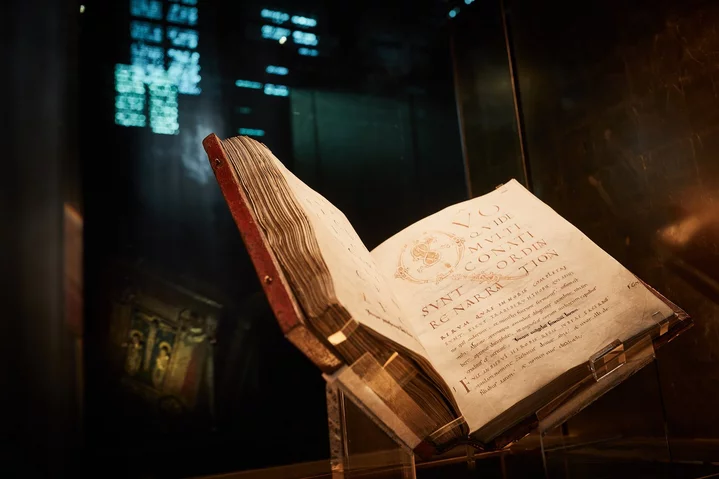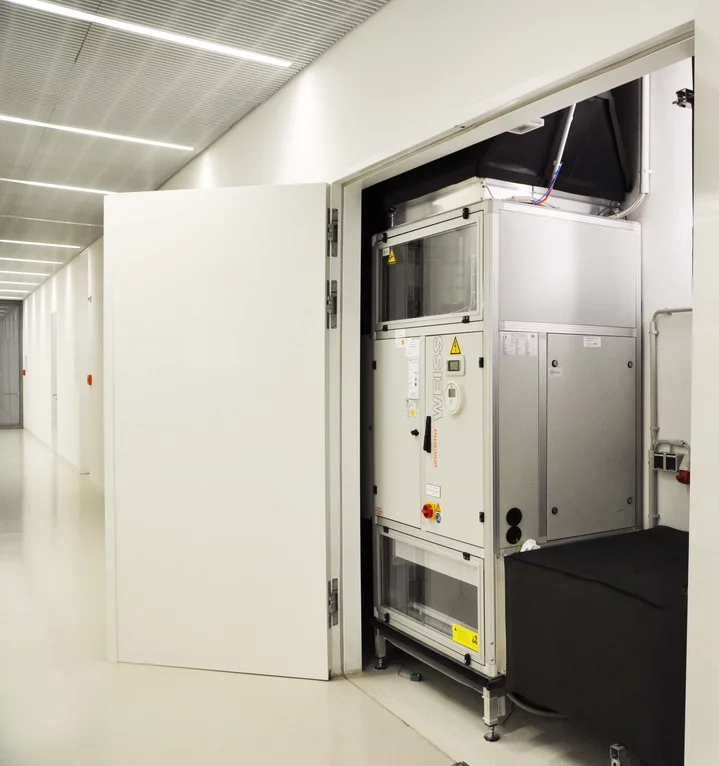Museums & Archives
Keeping the treasures of the past safe
Museums & Archives
Exhibits and archived items are precious pieces that are usually particularly sensitive to climatic influences due to their age. Optimal temperature and humidity regulation is essential to their long-term preservation. Whether in a reading room, exhibition space, stack room or workshop - the right climate is crucial.

Specific requirements
The temperature and humidity values in the storage rooms are crucial for the permanent storage and preservation of historically important archive items and exhibits. An perfectly adapted room climate ensures the preservation of the inventory, protects the pieces from damage and thus considerably prolongs their lifespan. The dangers of incorrect air conditioning are, for example:
- Excessive temperature and humidity accelerate the chemical degradation processes in paper and other materials.
- Relative humidity above 60-65% will cause mould to form and allow harmful substances to penetrate deeper into the items. This can swell and deform sensitive materials.
- Insufficient humidity dries out the materials and reduces their flexibility. The items can become brittle or hardened, making them even more susceptible to physical damage.

Avoiding climate fluctuations
The greatest danger for archived objects and exhibits, however, are frequent and rapid climate fluctuations. These cause a high degree of physical stress and can lead to permanent damage. Permanent deformations can occur in archive records made of different materials. Temperature and humidity differences can also lead to the formation of condensation and thus mould. With photos (but also digital prints), tensions can occur between the different layers, resulting in cracks in the surface.

Creating optimal conditions
The temperature and humidity values for optimal long-term storage of archive records vary depending on the material being stored. Based on Annex B of DIN ISO 11799, the following "ideal values" apply as a guide:
| Archive material | Temperature | Relative humidity |
| Paper |
14 – 18 °C |
35 – 50 % |
| Parchment |
2 – 18 °C |
50 – 60 % |
| Microfilm |
21 °C |
20 – 50 % |
| Colour film |
10 °C |
20 – 50 % |
| Photographs, black and white |
18 °C |
30 – 50 % |
| Colour photographs |
2 °C |
30 – 40 % |
| Magnetic tapes |
8 – 11 °C |
15 – 50 % |

Standardised planning and implementation
The AMEV 2018 places particular emphasis on the precise regulation of temperature and humidity in museums and archives in order to ensure the long-term preservation of sensitive cultural assets and archive materials. Energy-efficient systems are required that not only minimise energy consumption, but also enable continuous monitoring and automatic adjustment of climate parameters.
In addition, the reliability and ease of maintenance of the systems play a decisive role in ensuring operation even under demanding conditions. It is important that the systems are designed in such a way that they can react flexibly to changes in the ambient conditions. This is the only way to effectively prevent damage caused by climate fluctuations or uncontrolled humidity development.

Solutions
A controlled climate control solution helps to preserve exhibits over time. Our solutions offer the possibility of adapting temperature and humidity to the climatic conditions of the different archives in relation to the room. In this way, you create optimal climate zones in which a constant and material-friendly room climate is achieved. We are experts that offer a comprehensive service, from air-conditioning advice to the installation of flexible air-conditioning technology and the matching of the units to the variable climate requirements of your exhibits.
